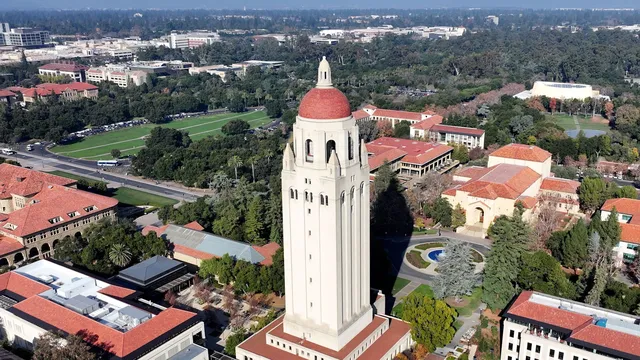
U.S. Justice Department investigates admissions policies for racial bias
2025-03-31 00:00- The U.S. Justice Department has initiated compliance review investigations into the admissions policies of four Californian universities including Stanford and UC Berkeley.
- U.S. Attorney General Pam Bondi stated that the goal of these investigations is to eliminate illegal discrimination in college admissions.
- These actions are part of an ongoing effort by the Trump administration to dismantle diversity, equity, and inclusion programs in education.
Express your sentiment!
Insights
In March 2023, the U.S. Justice Department launched an investigation into the admissions policies at four prominent California universities, including Stanford University and three campuses of the University of California system—UC Berkeley, UCLA, and UC Irvine. This action was initiated following a significant U.S. Supreme Court ruling that addressed affirmative action in college admissions, which prohibited the use of racial or ethnic quotas in evaluating applicants. The investigations are part of a broader trend initiated by the Trump administration, which aims to dismantle diversity, equity, and inclusion policies that could potentially lead to discrimination against non-minority applicants. U.S. Attorney General Pam Bondi conveyed that these policies have prioritized racial considerations over merit-based criteria, fostering division among qualified applicants and perpetuating illegal discrimination. Bondi affirmed the commitment to restore meritocracy within educational institutions. The investigations prompted responses from Stanford, which emphasized compliance and a quick assessment of its current admissions practices in light of the ruling. The implications of these investigations extend beyond just the California universities involved, as there are heightened concerns regarding federal funding for schools that do not align with the administration's directives against race-based preferences. This federal oversight reflects a significant shift in policy focus as the government seeks to ensure that admissions processes are equitable for all applicants, emphasizing individual merit rather than group identities. Further backdrops to this situation can be traced to ongoing debates nationally about race, equality, and discrimination in education, igniting discussions about the future of college admissions across the United States.
Contexts
The Supreme Court ruling on affirmative action represents a significant turning point in the discourse surrounding equality and educational opportunity in the United States. Historically, affirmative action policies have aimed to counteract systemic inequalities faced by marginalized groups, particularly in higher education and employment. The Court's decision has the potential to reshape admission processes in colleges and universities, influencing not only the composition of student bodies but also broader societal perceptions of diversity and equality. As such, the ruling is both a legal milestone and a touchstone for ongoing debates about justice and representation in American institutions. In the wake of the ruling, institutions that previously implemented affirmative action programs must now navigate the decision's implications while striving to uphold their commitments to diversity and inclusion. Many universities may face challenges in recruiting and retaining underrepresented student populations without the ability to consider race as a factor in admissions. This transition may lead to a reliance on alternative strategies, such as socioeconomic assessments and outreach efforts, to ensure access for diverse groups. The educational landscape is poised for reassessment, as institutions explore new ways to foster inclusivity within the parameters set by the Court. Moreover, the ruling is likely to set a precedent that extends beyond academia, informing policies across various sectors, including employment and business practices. Corporations and organizations may rethink their diversity initiatives, as legal teams assess the extent to which affirmative action principles can be applied in recruitment and hiring processes. The ruling raises questions about how to achieve equitable representation while complying with legal constraints, prompting a national dialogue on the balance between meritocracy and the need for systemic change. In conclusion, the impact of the Supreme Court's ruling on affirmative action underscores the contentious nature of race and equality in America. As society grapples with the implications of this decision, it is essential to consider how it will influence efforts to rectify historical injustices. The ruling may catalyze a reevaluation of affirmative action alternatives, prompting innovation in the pursuit of equity. Ultimately, the ongoing discourse and legal interpretation of this ruling will shape the future of social justice initiatives and the understanding of what constitutes fairness in the American landscape.